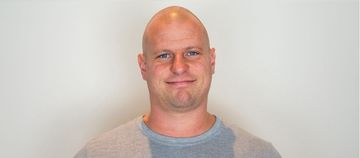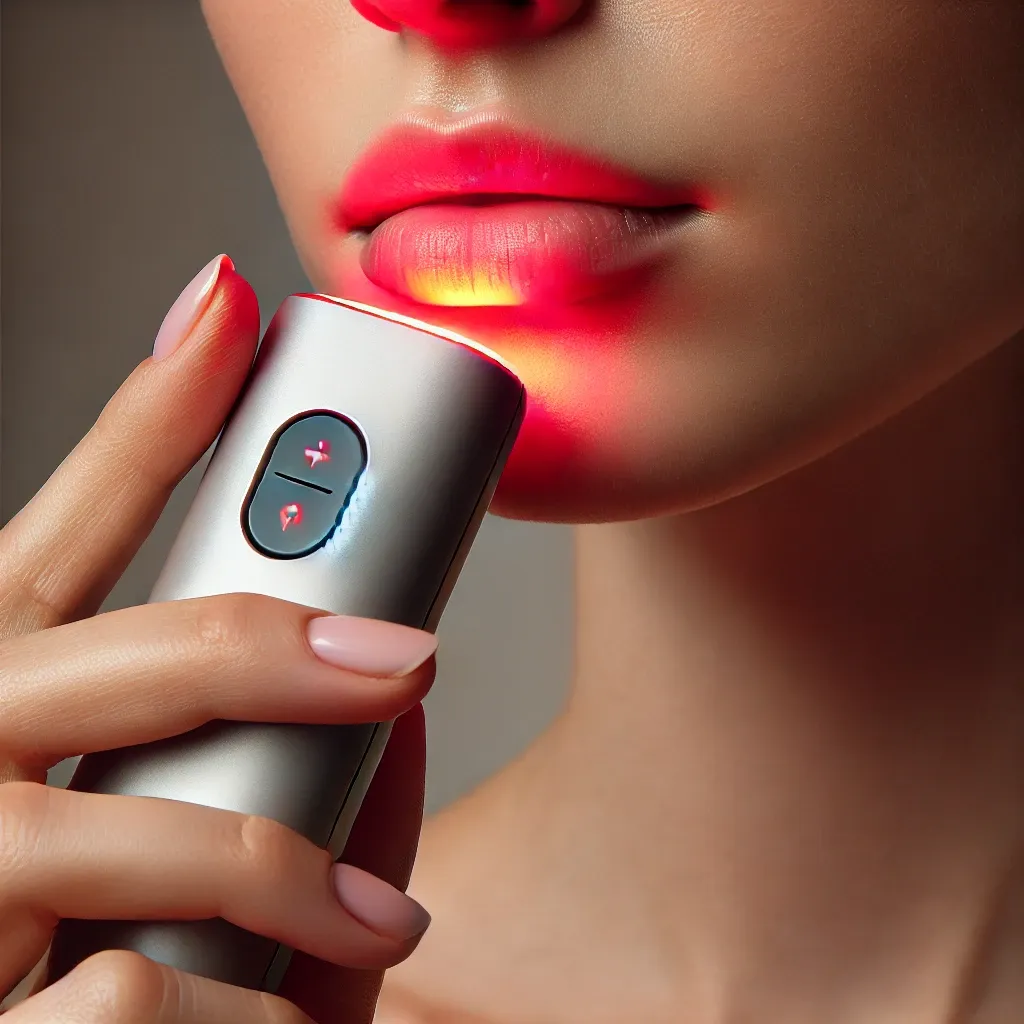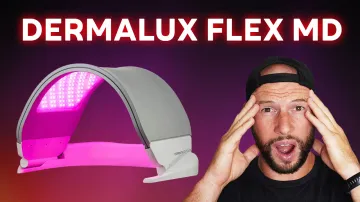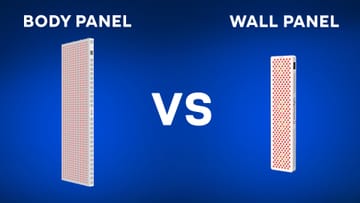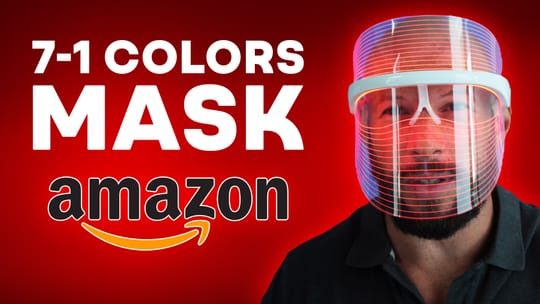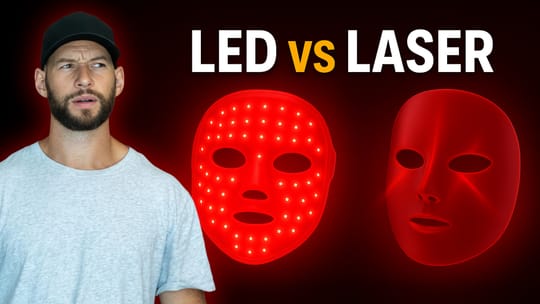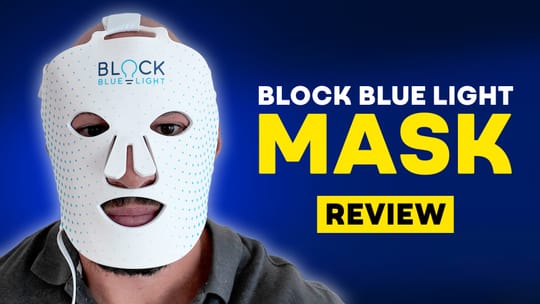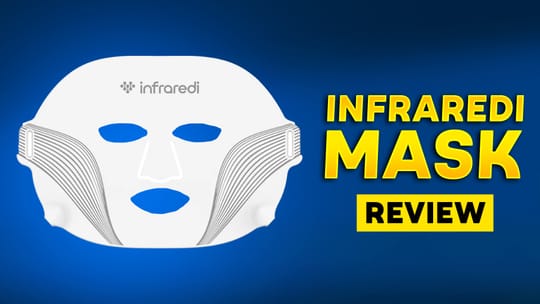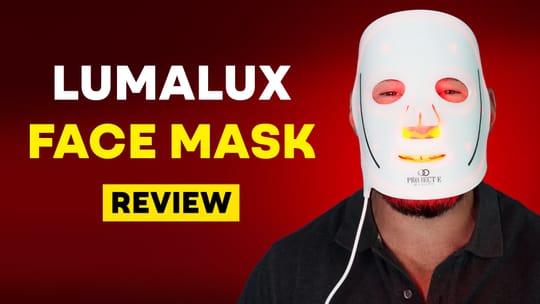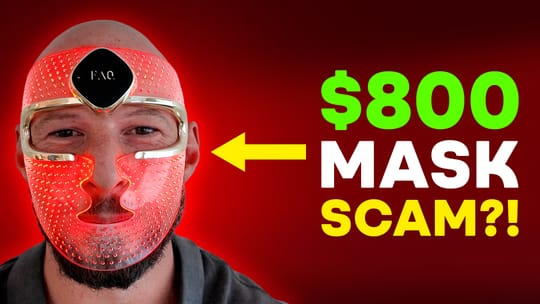Yes, you've probably had a nasty cold sore after a stressful episode! Whether you were traveling, didn't get sufficient sleep, or had a very busy week, many of us are familiar with cold sores breaking out on our lips!
I've been there myself.
What's interesting, though, is that the red light therapy for cold sores approach is really promising! We found out experimentally at this website - check out Alex Fergus, the founder of this website, talking about how he uses red light therapy for herpes when traveling:
But next to anecdotal evidence, there's actually quite a lot of science published on this topic that I'll explore in detail. If you're short on time, however, then just read the summary below.
Remember that I'm not covering Herpes Zoster as shingles here - that's a topic for another day!
Cold sores, or "herpes labialis", are caused by the Herpes Simplex Virus (HSV). There are two types of this virus, HSV-1 and HSV-2, and type 1 is mostly responsible for the viral outbreaks on the lips on your face.
Hygiene and oral contact is the main reason many people end up with cold sores. Many people in both the developing and developing world have this condition, which is recurrent and can't be fixed - with 60 - 80% of people affected, roughly.
The HSV virus is latent and stays in your body. Typical treatment includes creams such as acyclovir to manage the outbreaks. Natural management includes lemon balm, lysine, propolis (bee products), vitamin E, and zinc. Red light therapy can also be added to that list, as the science is decently solid!
Currently, there are 20+ studies on red light therapy for herpes labialies. Most of these studies show huge improvements, such as halving the symptomatic period. The studies generally use different wavelengths, such as 650, 660, 808, 870, and 1,072 nm, and generally use lower dosages, such as 5 - 10 J/cm2, for great results. If you don't get results, use doses of up to 30 J/cm2. These results exist even if you treat the area with acyclovir.
Some immunocompromised people need to be more careful managing their herpes labialis with strong sunlight, heat (saunas), and exercise, as these can make matters worse if you're already stressed. This article doesn't contain medical advice, and if you've got persistent problems, consult your family physician, please!
Important Comments
If you need an introduction to what these terms mean, check the following resources:
- What Is Red Light Therapy?
- Red Light Therapy Explained: Basic Terms Guide
- Start Here - Light Therapy 101 & Buyers Guide
- Red Light Therapy Dosing Chart: The Raw Data From Hundreds Of Studies
- Red Light Therapy Dosing: Why It's Complicated!
- Red Light Therapy Wavelengths Benefits: The Ultimate Guide
- How Often Should You Use Red Light Therapy Explained
These resources should give you a basic understanding of how red light therapy works, and the discussions around it!
The picture at the top of this article is AI-generated though!
Herpes Simplex Introduction: Cold Sores Basics
So let's start with a few reviews on herpes simplex - reviews analyze and integrate previously published high-quality evidence on a given topic (1; 2; 3; 4; 5; 6; 7; 8). Herpes simplex causes multiple disease patterns, such as "herpes simplex encephalitis, herpes simplex keratitis, and herpes labialis" (1). I'll mostly focus on the latter here! The encephalitis is a brain condition, and the keratitis is an eye condition.
The Herpes simplex virus can stay latent in the human body, meaning you usually don't notice you're affected. But then, under stress levels or poorer immune function, the disease reappears because the virus is still in your body (1). This virus actually infects most people in the developed world, but they usually don't experience symptoms. And lots of research is focused on fixing this condition but not succesfully - examples here are vaccines and gene therapy (1).
Fortunately, the Herpes Simplex virus is treatable. Here's what a recent review states about the topic:
"Although in the continued absence of an acceptable prophylactic and therapeutic vaccine, approved pharmacologics (e.g., nucleoside analogs) hold benefit against viral outbreaks, while resistance and toxicity limit their universal application. Against these shortcomings, there is a long history of proven and unproven home remedies. With the breadth of purported alternative therapies, patients are exposed to risk of harm without proper information. Here, we examined the shortcomings of the current gold standard HSV therapy, acyclovir, and described several natural products that demonstrated promise in controlling HSV infection, including lemon balm, lysine, propolis, vitamin E, and zinc, while arginine, cannabis, and many other recreational drugs are detrimental. " (2).
That's hopefully easy for you!
Everyone can get lemon balm for a herpes simplex infection, and most people will be able to get zinc, vitamin E, and the propolis bee product. Lysine may be a bit harder, but you can get it in most supplement stores!
What's interesting, however, is that this review doesn't mention red light therapy - a topic I'll explore in a second! Such solutions are needed because pharmaceuticals have been working less well over decades because of resistance (3).
What Are Cold Sores And How To Fight Against Them?
There are also different variants of the Herpes Simplex virus. The HSV-1 virus variant causes cold sores, among others, while the HSV-2 virus is almost always the cause of genital herpes - an STD (7). The virus can also cause brain conditions (8).
And yet, solutions are needed. About 85% of people in Australia and New Zealand are infected by the HSV-1 virus (4). In the USA, it's 63% (5). And, normally dormant virus doesn't cause much of a problem, but once your health deteriorates over time and you've got a compromised immune system, real damage can be done (6).
Oral contact is the primary method of transferring HSV-1 - this can happen through kissing or infected objects such as utensils. HSV-2 is mainly spread through sexual contact.
Regarding symptoms, HSV-1 is mainly characterized by blisters on the lips or mouth. I currently have these as I'm typing this article, believe it or not! You can have other symptoms generally associated with infections as well, such as fevers or swelling, although this is rare over time. HSV-2 also gives potential symptoms in the genital region - but I won't be focusing much on this version here!
Both viruses are similar because they remain dormant for a long time and reactivate under stress. Both viruses can also be spread while a person is asymptomatic. Unfortunately, pharmaceuticals can be great for symptom management but don't remove the dormant virus.
Next up, let's consider some good news:
Can Red Light Work On Cold Sores? Breakdown Of Studies!
What's super interesting is that there are a whopping 20 studies on Herpes Simplex and red light therapy (9). I'll only focus on "herpes labialis" and red light therapy here - so when you've got symptoms at the lips. So I'm not considering the genital variation here. I've also only included human studies, because plenty of them are out there!
So here's the red light cold sore treatment science:
- First, one study used 940 nm at 4 J/cm2 (a great skin treatment dose) with a cream (acyclovir), and compared the results to the group receiving a cream only (10). Both pain and lesion size decreased significantly with the red light therapy added! A 100 mW laser was used here.
- Then there's a 650 nm study using 4.7 J/cm2 as a dose (11). Here both the intervention and control group use the cream, but only the intervention group uses light therapy. Red light therapy reduced pain, while wound recovery didn't change.
- Next up, an 808 nm study using up to 22 J/cm2 give or take but where 11 J/cm2 worked best (12). Here, the light had a preventive impact, meaning fewer lesions developed over time. Lesion severity also decreased.
- A 660 nm laser study combined the light with methylene blue (13). This is a case study, however, with only 1 participant. The results were positive - and due to the wide availability I think methylene blue is worth trying in this context, if you can get access to a 660 nm red light device!
- Another 660 nm with photodynamic therapy (the interaction between light and a substance) also has a good outcome (14). Pain relief, inflammation, and tissue repair all improved in 3 separate cases.
- Then, 870 nm was used at 4.7 J/cm2 against a group who uses acyclovir cream (for Herpes) and a group that used no intervention (15). Here's the recovery described in the article:
"The mean length of recovery time (day) in the laser, off laser, and acyclovir groups was 2.20±0.41, 4.30±1.03, and 3.4±1.142, respectively." (15).
- So recovery time was almost halved in the laser treatment group, versus the group not receiving any therapy!
- Then there's a 1,072 nm study used three times per day for two days (16). The healing time was cut by around a third! The study doesn't provide maximal detail about the treatment protocol and power output, however!
- Next up, a 670 nm study with 2.04 J/cm2 as a total dose (17). The full treatment protocol is a bit more complex, however, and you'll have to check the study for that. Both the healing and recurrence periods improved when the light was applied.
- A case study with 3 participants, using 780 nm light at 8.75 J/cm, shows that a preventive approach before symptoms appear works really well (18)!
- Another 660 nm case study of two participants using quite a high dose of 30 J/cm2 was used, but prevented recurrence (19).
- One study using 3 and 4.5 J/cm2 at 780 nm had improvements in the redness, inflammation, and healing speed (20). Pain and monthly recurrences weren't affected in this study.
- Next, a study with 660 and the somewhat rare 2,940 nm light, where the dose is likely a combination of a high and low dose but not well described (21). Here's what researchers write:
"The treatment of the lesions with the association of high-intensity (erbium-doped yttrium aluminum garnet, 2.94 mum, 80 mJ/pulse, 2-4 Hz) and low-intensity (indium gallium aluminum phosphide, 660 nm, 3.8 J/cm(2), 10 mW) lasers has not been reported in the literature. During treatment, no systemic or topical medication was used. Pain sensitivity was completely gone after the first irradiation with the low-intensity laser. During the healing process, lesions were traumatized twice, on the days 4 and 7. Even though the lesions were completely healed within 10 days." (21)
- So the overall outcomes are great!
- Another study combines a high and low-intensity laser but doesn't show the wavelength (22). Healing and pain both improved.
- Then, a case study uses 660 nm at 7.5 J/cm2 (23). There was an "immediate outcome", hinting at rapid good results. The only participant in this study was a 19-month-old boy, who had quite extensive symptoms around the mouth.
- One more 1,072 nm study used three daily treatments for two days (24). Light treatment sped up healing about 30-40%. Not all treatment parameters can be read from the study, however!
- Another 1,072 nm study shows that light treatment speeds up the healing by almost double the speed of the aciclovir cream (25).
- Lastly, a 690 nm study at a whopping 48 J/cm2 and 80 mW/cm2 created a 10X in the median recurrence period (26). The laser treatment group had a median of 37.5 weeks until symptoms reappeared, while this was 3 weeks in the placebo group!
So, overall, the question of "does red light therapy help cold sores" can be answered by "yes"!
Treatment Protocol For The Antiviral Effects Of Red Light Therapy
So, what should I conclude from the previous section? What would be the best cold sore light treatment here?
Looking at the previous studies, I'd:
- Use red light therapy daily as a preventative if you've regularly gotten cold sores. This means treating the affected area on the lips for some time, even with higher doses.
- If symptoms appear, ensure that you start treatment as quickly as possible. We don't have any wavelength comparison blogs right now, unfortunately, so I can't say whether 660 or 780 or 1,072 nm is superior for cold sores.
- The good thing is, all of the studies I've described above are really positive in terms of outcomes! All studies show positive results, without exception.
- Once cold sores have broken out, you may want to treat with a lower total dose, such as 3 - 10 J/cm2 at the maximum. If that dose doesn't work, higher doses can be used!
- You can use photodynamic therapy, such as with methylene blue and 660 nm red light, but there's little research on this topic!
Next up:
Can Any Problems Arise During The Application Of Red Light Therapy?
So, let's check a few of the reviews on red light therapy and herpes labialis. I didn't see any side effects in the studies I've quoted above, and only saw positive results, but let's check (27; 28; 29).
Of course, you can have side effects when you're improperly using a light therapy device - lasers specifically. Lasers can emit a huge amount of energy to a smaller area and I've literally seen them burn or cut in real life. So if you're using a medical laser, make sure you or the person using the device is school in using it!
Overall, though, with regular red light therapy devices, such as a handheld panel, or a Kineon MOVE+, or a tabletop panel, there's not much that can go wrong with those LED applications.
Here are the options I just mentioned:
And:
And lastly, tabletop panels - although these are already too big if you're only treating cold sores:
There's no need for a costly device if red light therapy for herpes is your only aim! There's likely also no need for an at home laser for cold sores - LEDs almost certainly work just fine (although more research is needed!)
But back to the reviews I just discussed (27; 28; 29). A review from 2018 states that:
"The wavelengths, the power output, and energy density ranged between 632.5-870 nm, 5-80 W, and 2.04-48 J/cm2, respectively. All included studies found laser to be effective in the management and prevention of RHL, without any side effects. The findings of this review suggest that laser is potentially a safe and effective treatment alternative for the management of RHL." (28).
However, that review doesn't take most of the newest evidence into account but still emphasizes that there are no known side effects! Concerning photodynamic therapy - when methylene blue is added to 660 nm for instance - researchers write the following:
"The association of [Photodynamic Therapy] in the vesicular phase and [red light therapy] in the crust phase can be considered a promising solution for recurrent labial herpes. Despite the many successful cases reported, establishing an effective clinical protocol for the treatment of herpes labialis using [Photodynamic Therapy] followed by [red light therapy] will only be possible through double-blind placebo studies that would elucidate the exact action of this treatment modality, the appropriate irradiation parameters for both therapies, optimal timing, and number of [red light therapy] sessions following [Photodynamic Therapy]." (27)
So, on photodynamic therapy much more research is needed, but it seems safe! Then, let's consider a topic that's a bit more controversial:
Lights That May Worsen Your Symptoms: Ultraviolet Light
So here's something interesting: not only is ultraviolet light counterproductive against herpes labialis healing, it can in certain instances actively create symptoms again! This effect has been described in the medical science for decades now (30; 31; 32).
Simply put, stimulation with ultraviolet light can reactivate herpes infections. That exposure only leads to the reactivation after a few days, however, so the results won't be immediate!
Generally, though, I don't recommend avoiding all sunlight to prevent herpes reinfections. The benefits of sunlight are too great for you to ignore it, such as enormous advantages for heart health, overall cancer risk, blood sugar management, sleep and mood, preventing neurodegenerative disease, and much more.
If you've got lots of problems with herpes simplex, the better recommendation here is to be careful with sunlight at times your stress levels are very high. But otherwise, please don't avoid the sun altogether as doing so is a massive disadvantage for overall health!
Blue light seems to have the opposite effect of ultraviolet light, however, and is more in line with red light's effects (33; 34; 35).
Then there's another issue to be aware of:
Infrared Sauna Or Red Light Therapy For Herpes?
So, surprisingly - I didn't know this before doing the research - heat and extreme heat in particular may also trigger the herpes simplex virus! The evidence is not the strongest here, however (36; 37; 38; 39).
I've written an article in the past comparing infrared saunas with red light therapy. In that article, I describe many of the amazing sauna benefits, so here, too, I've got the same conclusion. In many cases, the slight inconvenience of a herpes infection, such as a cold sore on the lips, isn't sufficient reason to avoid saunas in the first place!
Even exercise until intense fatigue increases your risk of cold sores reappearing (40; 41; 42; 43)! And I would never recommend you to avoid exercise to avoid a cold sore! The costs to your health don't outweigh the small benefits here!
When To See a Doctor
If you've got recurrent cold sores that can't be treated properly, and cause immune issues, please see a doctor! The same is also true if you're immunocompromised. Simply put, get a doctor involved once cold sores put your overall health at risk. I know this conclusion is somewhat common sense, but we still have many people trying the natural health approach even if they've got severe conditions, such as in our Facebook group:
Conclusion: Red Light Therapy For Herpes For The Win!
So, fortunately, this story has a good outcome! In general, I strongly recommend red light therapy for herpes and we've got outstanding results with it personally in our team!
Be more careful with herpes and infrared sauna, exercise, or UV light for cold sores if you're immunocompromised or in poor health! In other cases, these domains shouldn't be a problem!
And again, please try some of the simple devices, such as the Kineon MOVE+, the handheld red light therapy units, or the budget tabeltop panels!
This is a post by Bart Wolbers. Bart finished degrees in Physical Therapy (B), Philosophy (BA and MA), Philosophy of Science and Technology (MS - with distinction), and Clinical Health Science (MS), has had training in functional medicine, and is currently chief science writer at Lighttherapyinsiders.com
Found This Interesting? Then You Might Like:
- Start Here - Light Therapy 101 & Buyers Guide
- What Is Red Light Therapy?
- Discount Codes, Deals & Recommendations - Red Light Therapy
- Red Light Therapy & Tattoos: Harm Potential Or Helpful?
- Red Light Therapy For Melasma & Hyperpigmentation: Everything You Need To Know
- The Red Light Therapy Facial Fat Loss Link: Myth Or Reality?
- Red Light Therapy For Face Before And After: Unbelievable Results!
- Red Light Therapy For Sunburn: Prevention and Treatment
- Does Red Light Therapy Help Scars? The Science
- Red Light Therapy For Skin: Beauty Benefits, Potential Complications, And More
